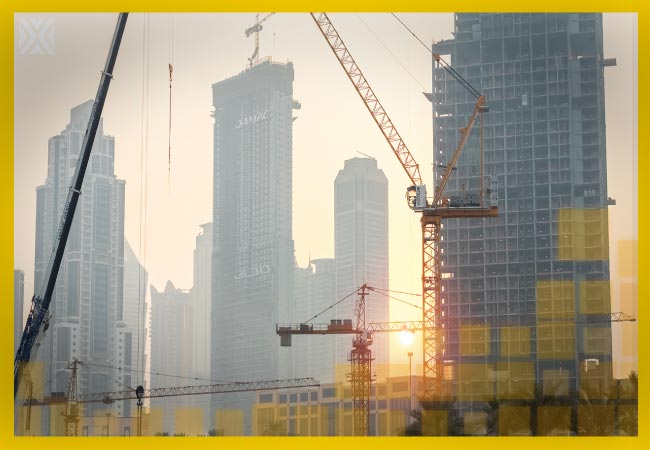Currency
May 23, 2022

Working at height is defined as any workplace activity conducted at, above, or below ground level, where there is a risk of a person being injured falling from any height. Falls from working at height are one of the biggest causes of workplace fatalities and major injuries.
In addition to falling from height to ground level (or below), working at height can also encompass falls into holes or pits, tanks, or machinery. Access and egress to a workplace could also constitute working at height.
In addition to the fall itself, other hazards associated with working at height include falling objects, contact with overhead electrical services, platform collapse, falling into a hazardous substance, machinery or the path of a moving vehicle.
Working at height needs careful planning in advance, with consideration given to the selection and use of work equipment, and the establishment of a plan and means of escape in the event of an emergency. Consider the below as a minimum:
•Can the work at height be avoided? For example, can the task be undertaken from ground level? Examples include installing cables at ground level or using extendable tools instead of working at height.
•If the work cannot be avoided, ensure that it will be adequately planned, risk assessed, organised and supervised.
•Ensure the proper selection, provision, inspection and maintenance of the most appropriate equipment to both prevent a fall from occurring and also minimise the distance and consequences of any potential fall.
•Ensure that persons undertaking working at height are trained and competent for their work activities.
•Ensure that adequate information, instruction, supervision and training is provided.
•Ensure that emergency procedures are in place which include a rescue plan, to deal with any potential working at height emergency.

The planning must also include risk assessments in which the company should assess the working at height activity and the hazards arising from the activity, then implement effective control measures to reduce the exposure of persons to risk.
“working at height needs careful planning including means of escape in the event of an emergency”
The company should ensure that no person engages in any activity, which includes organising, planning and supervising, in relation to working at height or the use of working at height equipment unless they are competent, or, if being trained, are supervised by a competent person.
Where working at height cannot be avoided, an existing safe place of work should be used. The workplace and its means of access or egress should:
•Be stable and of sufficient strength and rigidity for the purpose
•Rest on surfaces that are stable and of a suitable strength
•Be of a sufficient size to allow the safe use of persons, plant and material
•Be constructed, used and maintained to prevent the risks of slipping, tripping or any person being trapped between it and any adjacent structure
•Have suitable means for preventing a fall in place
Where there is no suitable existing safe place to work from, work equipment or other measures to prevent falls should be provided.
“where there is no existing safe place to work from, work equipment to prevent falls should be provided”
Working at height equipment includes any equipment that is specifically designed to allow persons to work at height safely. The company must ensure that working platforms are stable, suitable and of sufficient strength and rigidity for the intended purpose.
The company must also ensure when determining the type of equipment to choose, they consider factors including:
•The nature, frequency and duration of the work equipment use
•The height of the job
•The load on the equipment
•Whether there is level ground available to use at the work site
•Are there any obstructions?
•What is the available space?
•What are the working conditions?
•What would be the potential distance of a fall and the potential nature of an injury?
•What training would be required for the work equipment?
https://www.hsmemagazine.com/article/the-middle-ground/
In addition to falling from height to ground level (or below), working at height can also encompass falls into holes or pits, tanks, or machinery. Access and egress to a workplace could also constitute working at height.
In addition to the fall itself, other hazards associated with working at height include falling objects, contact with overhead electrical services, platform collapse, falling into a hazardous substance, machinery or the path of a moving vehicle.
Planning your Working at Height Activity
Working at height needs careful planning in advance, with consideration given to the selection and use of work equipment, and the establishment of a plan and means of escape in the event of an emergency. Consider the below as a minimum:
•Can the work at height be avoided? For example, can the task be undertaken from ground level? Examples include installing cables at ground level or using extendable tools instead of working at height.
•If the work cannot be avoided, ensure that it will be adequately planned, risk assessed, organised and supervised.
•Ensure the proper selection, provision, inspection and maintenance of the most appropriate equipment to both prevent a fall from occurring and also minimise the distance and consequences of any potential fall.
•Ensure that persons undertaking working at height are trained and competent for their work activities.
•Ensure that adequate information, instruction, supervision and training is provided.
•Ensure that emergency procedures are in place which include a rescue plan, to deal with any potential working at height emergency.

The planning must also include risk assessments in which the company should assess the working at height activity and the hazards arising from the activity, then implement effective control measures to reduce the exposure of persons to risk.
“working at height needs careful planning including means of escape in the event of an emergency”
The company should ensure that no person engages in any activity, which includes organising, planning and supervising, in relation to working at height or the use of working at height equipment unless they are competent, or, if being trained, are supervised by a competent person.
Beginning your Working at Height Activity
Where working at height cannot be avoided, an existing safe place of work should be used. The workplace and its means of access or egress should:
•Be stable and of sufficient strength and rigidity for the purpose
•Rest on surfaces that are stable and of a suitable strength
•Be of a sufficient size to allow the safe use of persons, plant and material
•Be constructed, used and maintained to prevent the risks of slipping, tripping or any person being trapped between it and any adjacent structure
•Have suitable means for preventing a fall in place
Where there is no suitable existing safe place to work from, work equipment or other measures to prevent falls should be provided.
“where there is no existing safe place to work from, work equipment to prevent falls should be provided”
Selecting the Right Equipment
Working at height equipment includes any equipment that is specifically designed to allow persons to work at height safely. The company must ensure that working platforms are stable, suitable and of sufficient strength and rigidity for the intended purpose.
The company must also ensure when determining the type of equipment to choose, they consider factors including:
•The nature, frequency and duration of the work equipment use
•The height of the job
•The load on the equipment
•Whether there is level ground available to use at the work site
•Are there any obstructions?
•What is the available space?
•What are the working conditions?
•What would be the potential distance of a fall and the potential nature of an injury?
•What training would be required for the work equipment?
SOURCE:
https://www.hsmemagazine.com/article/the-middle-ground/









